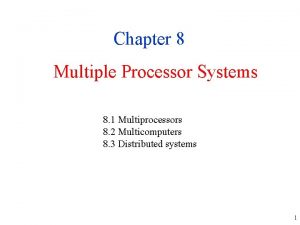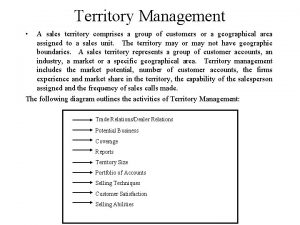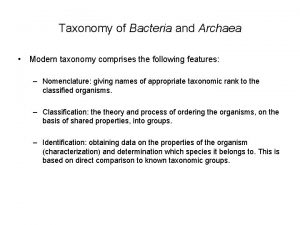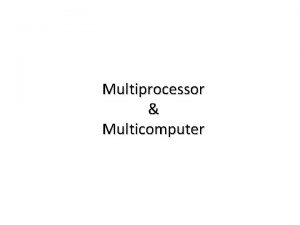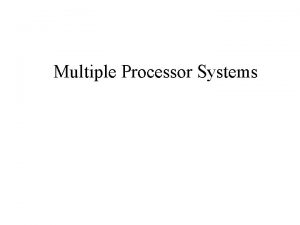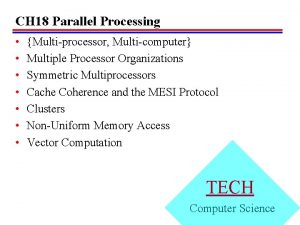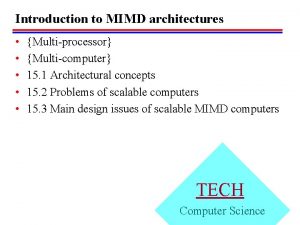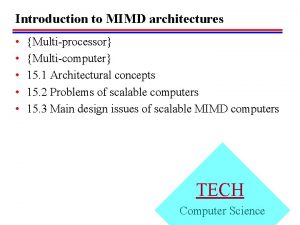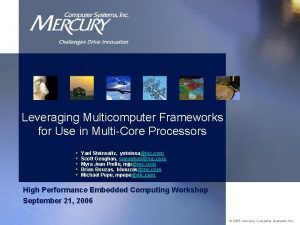SHARCNET Multicomputer Systems r A multicomputer system comprises












- Slides: 12

SHARCNET

Multicomputer Systems r A multicomputer system comprises of a number of independent machines linked by an interconnection network. r Each computer executes its own program which may access its local memory and may send and receive messages over the network. r The nature of the interconnection network has been a major topic of research for both academia and industry. r Distributed systems is one type of multicomputer system. What about others?

Multiprocessor Usage • Scientific and engineering applications often require loops over large vectors e. g. , matrix elements or points in a grid or 3 D mesh. Applications include • • Computational fluid dynamics Scheduling (airline) Health and biological modeling Economics and financial modelling (e. g. , option pricing)

Multiprocessor Usage r It should be noted that people have been developing “clusters” of machines that are connected using Ethernet for parallel applications. r The first such cluster (developed by two researchers at NASA) had 16 486 machines and was connected using 10 Mb Ethernet. r This is known as the Beowulf approach to developing a parallel computing and the clusters are sometimes called Beowulf clusters.

Sharcnet r UWO has taken a leading role in Canada in exploiting the concepts behind the Beowulf cluster. r High performance clusters: “Beowulf on steroids” m m Powerful “off the shelf” computational elements Advanced communications r Geographical separation (local use) r Connect clusters: emerging optical communications r This is referred to as Shared Hierarchical Academic Research Computing Network or Sharcnet

Sharcnet r One cluster is called “Great White” r Processors: m 4 alpha processors: 833 Mhz (4 p-SMP) m 4 Gb of memory m 38 SMPs: a total of 152 processors r Communications m 1 Gb/sec ethernet m 1. 6 Gb/sec quadrics connection r November 2001: #183 in the world m Fastest academic computer in Canada m 6 th fastest academic computer in North America

Sharcnet Great White (in Western Science Building)

Sharcnet r Extend “Beowulf” approach to clusters of high performance clusters r Connect clusters: “clusters of clusters” m Build on emerging optical communications m Initial configuration used optical equipment from telecommunications industry r Collectively a supercomputer!

Sharcnet GUELPH 108 Optical communication UWO 48 MAC 128 152 Clusters across Universities (initial cluster)

Sharcnet r In 2004, UWO received an investment of 56 million dollars from the government and private industry (HP) to expand Sharcnet. r With the new capabilities, Sharcnet could be in the top 100 or 150 of supercomputers. r Will be the fastest supercomputer of its kind – I. e. , a distributed system where nodes are clusters.

Sharcnet

Sharcnet Applications running on Sharcnet come from all sorts of domains including m Chemistry m Bioinformatics m Economics m Astrophysics m Material Science and Engineering
 Sharcnet summer school
Sharcnet summer school Multiprocessor
Multiprocessor Territory management definition
Territory management definition Happiness sadness anger fear disgust
Happiness sadness anger fear disgust Hydrarch succession stages
Hydrarch succession stages A css comprises of style rules that are interpreted
A css comprises of style rules that are interpreted Team comprises of
Team comprises of Chapter 1 introduction to accounting and business
Chapter 1 introduction to accounting and business Taxonomy comprises
Taxonomy comprises Dr abhishek chowdhury
Dr abhishek chowdhury Definition of farm management
Definition of farm management Decision support systems and intelligent systems
Decision support systems and intelligent systems Dicapine
Dicapine

